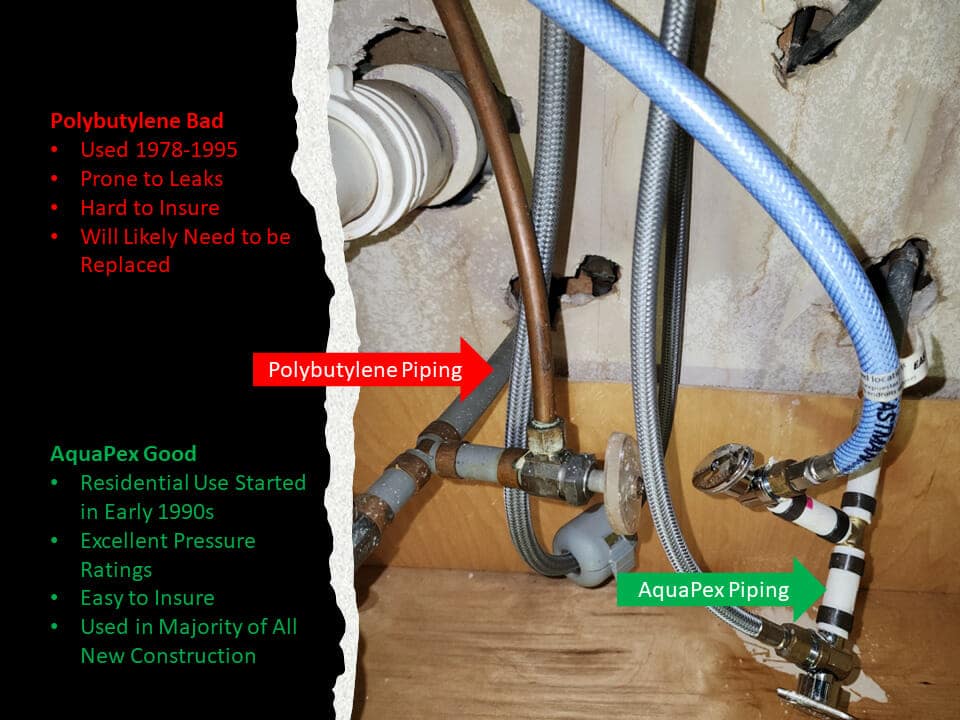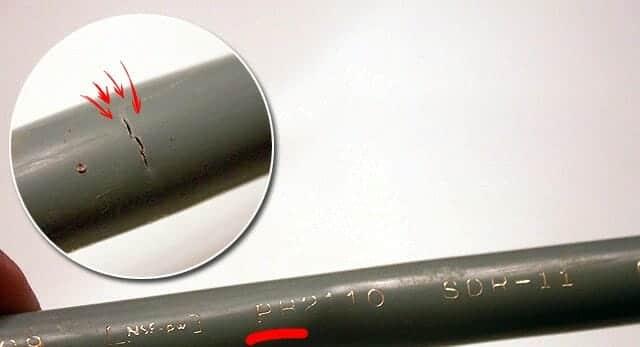Polybutylene Plumbing Pipes
What You Need to Know
Polybutylene Plumbing Pipes & Your Home
History of Polybutylene
Polybutylene plumbing pipes were extensively used in residential home construction in the United States from 1978 to 1995. During this period Polybutylene offered a much cheaper alternative to copper plumbing pipes. Initially, it revolutionized the plumbing industry due to its low cost and easy installation methods.
It is estimated that between 6 to 10 million homes in the United States were constructed with Polybutylene plumbing pipes during this timeframe. This would average out to about one in every five homes built during this period will containing this type of plumbing material.


Why is Polybutylene an Issue?
Arguably, Polybutylene’s bad reputation supersedes the scientific data supporting such claims. However, the important issue is the homeowner’s insurance industry has developed a significant aversion to insuring homes with polybutylene plumbing. But why?
It is believed that oxidants and/or chloramines in public water supplies negatively react with Polybutylene and its fittings ultimately making the pipes brittle at their fittings. This can lead to premature failure of the plumbing pipes as the pipes will lose elasticity, and become more likely to crack over time. Leaks like this can go undetected in a home until significant damage has already occurred to the home.
Polybutylene Plumbing Pipes and Litigation History
Not long after Polybutylene began to revolutionize the plumbing industry it quickly became evident that this type of plumbing system was not failsafe. Throughout the United States, many homeowners and consumers started to notice issues with poor design quality, manufacturing defects, sub-par installation methods, and the material prematurely failing due to the chemicals present in public water supplies. This led to over ten years of litigation, companies going bankrupt, and a class action lawsuit costing hundreds of millions of dollars. Hence the reason insurance companies are hesitant to underwrite a policy for homes with Polybutylene plumbing pipes.

Homeowners Insurance and Polybutylene
Due to the high amount of risk associated with Polybutylene plumbing pipes, homeowners insurance companies are unlikely to insure your home in the state of Florida if identified during a home inspection or four point inspection. There are some companies that may insure it, like Citizens Property Insurance Corporation, but these kinds of policies will more than likely exclude any interior water damage caused by your home’s plumbing system.
Additionally, you can expect to pay a much higher premium just due to the fact that you have Polybutylene in your home. As the insurance market in Florida becomes more stringent, more and more companies are refusing to underwrite Polybutylene, which means repiping your home will be required to bind an insurance policy.
What is a Repipe?
Many homeowners assume a repipe means replacing both your water supply and drain lines. However, a repipe only focuses on replacing the water distribution lines within your home. This includes all water lines to each plumbing fixture in the home, exterior spigots, main water shutoff, and laundry room supply lines.
Who Do We Choose?
The best recommendation we can make is to shop around. Larger companies can provide more of a one-stop shop, but that can get costly very quickly. We have found that smaller local plumbing companies in Central Florida, such as Trident Plumbing, Inc, can provide excellent cost-effective repipe services that will help you get your home easily insured at much better rates.
How Much Will a Repipe Cost?
Well, it depends…
The cost to repipe a home in Central Florida can vary from about $2,000 to $8,000 which may seem like a vague answer, but there are many variables that will ultimately affect the price.
When estimating the cost of a repipe for your home below are some factors that will impact your overall costs
- Number Plumbing Fixtures in Your Home
- How Accessible Are Your Fixtures
- Type of Repipe Material, i.e. CPVC vs PEX
- Availability of Repipe Material
- Size of Your Home
- Drywall Repair & Paint Included
- Plumbing Company That You Choose to Hire
Want more amazing content?
- View the permit history of your home with our Building Permit Search
- Learn more about Wind Mitigation and 4 Point Inspections
- Learn more About Our Veteran-Owned Company
- Curious as to what the life expectancies of your home’s components are? See our Life Expectancy Chart
